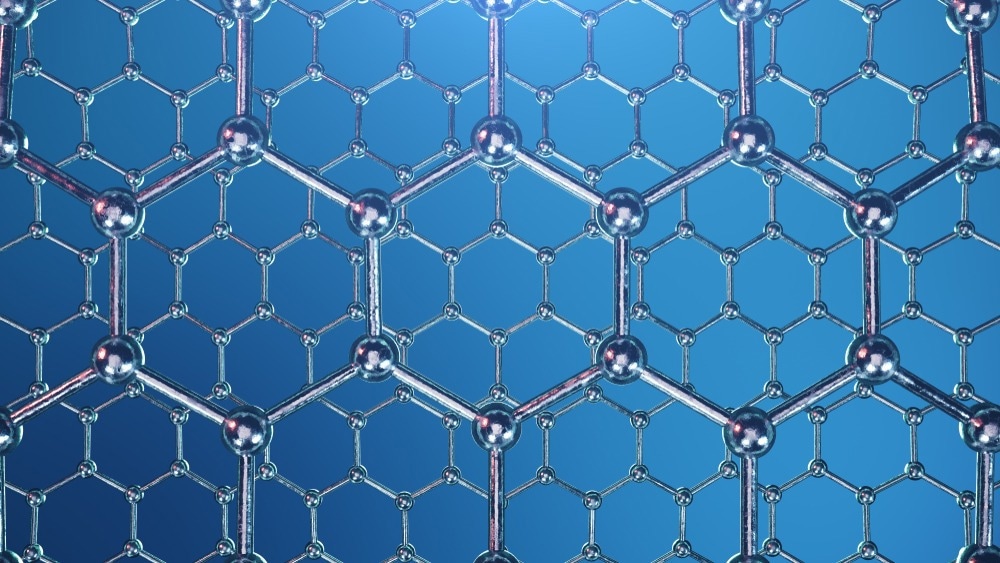Flexible planar micro-supercapacitors (MSCs) are particularly advantageous as miniature energy storage devices, offering great flexibility and integration.

Study: NiO Nanoparticles Anchored on N-Doped Laser-Induced Graphene for Flexible Planar Micro-Supercapacitors. Image Credit: Rost9/Shutterstock.com
In a study published in the journal ACS Applied Nano Materials, an efficient laser direct writing (LDW) approach is proposed to form flexible planar micro-supercapacitors using in-situ produced NiO nanoparticles attached to nitrogen-doped laser-induced graphene (NiO/NLIG) composite electrodes.
The Rise of Flexible Planar Micro-Supercapacitors
Flexible and portable miniature energy storage devices have become increasingly relevant in producing next-generation electronic devices.
Micro-supercapacitors (MSCs) show great promise in miniaturized flexible electronic systems because of their low weight, quick charging and discharging rates, high energy densities, and excellent cycle stability
Flexible MSCs are classified into two main types: planar and sandwich-type MSCs. Flexible planar MSCs are developed with interdigital fingers as current collectors, and the electrolyte is covered on the electrode surfaces and interspaces.
These flexible planar MSCs offer easy integration and are candidates for next-generation miniature energy storage systems.
The most noticeable benefit of flexible planar micro-supercapacitors over conventional sandwich-type MSCs is the small gap between the electrically isolated interlinked electrodes, which effectively removes the requirement of a separator and makes the integration of flexible planar micro-supercapacitors with various electronic components easier.
Production of Planar Micro-Supercapacitors via Electrode Patterning
A key method for developing flexible planar micro-supercapacitors is electrode patterning. The primary goal is the installation of patterned electrodes on flexible platforms using high-efficiency, inexpensive, and environmentally friendly micro-nano processing techniques.
Photolithography and plasma etching methods often need custom masks and specific processing conditions, leading to time-consuming and expensive procedures. Therefore, these methods are not always scalable and universally applicable.
Similarly, inkjet printing and screen printing have specific criteria for diluted inkjet inks and screen-printed pastes, limiting the range of available electrode materials.
Laser direct writing (LDW) is a remarkably efficient processing method using pulsed or continuous lasers to produce mask-free, fast, single-step scribing patterned electrodes in non-vacuum environments.
Issues with Conventional Fabrication Techniques for Graphene
Nanoparticles have been extensively utilized in energy storage systems because of their unique features. Graphene has good promise in electrochemical energy storage for supercapacitors owing to its excellent conductivity and large specific area.
Graphene fabricated by existing techniques suffers from different drawbacks. Mechanical exfoliation leads to the small size and irregular shape of graphene sheets. The CVD technique entails complex preparation processes and increased costs. The redox method can lead to deterioration of the desirable innate properties of graphene and environmental damage due to excessive discharge of chemical waste.
These drawbacks limit the mass production and widespread application of graphene.
Laser-Induced Graphene
Laser-induced graphene (LIG) presents a unique avenue for the synthesis and application of graphene. Various polymeric materials like polyetherimide, cloth, wood, and paper may also be used to make laser-induced graphene.
Laser-induced graphene offers all the benefits of standard graphene, such as excellent thermal and electrical conductivity, large specific areas, and remarkable mechanical characteristics. Moreover, it facilitates the production of graphene-patterned electrodes for flexible planar micro-supercapacitors.
Nevertheless, these in-plane laser-induced graphene MSCs are typically electric double-layer capacitors, which restricts the enhancement of their energy storage capabilities because of graphene's properties.
Doping laser-induced graphene with heterogeneous materials such as pseudocapacitive substances to create composite electrodes is a particularly effective technique to enhance the electrochemical properties of LIG composite-based flexible planar micro-supercapacitors.
Important Findings of the Study
In this research, the team used a facile and effective laser direct writing approach to fabricate flexible planar micro-supercapacitors using the NiO/NLIG composite electrodes.
The flexible planar micro-supercapacitors from nitrogen-doped LIG and pseudocapacitive NiO nanoparticles demonstrated remarkable electrochemical properties, including a high energy density, significant areal specific capacitance, and excellent cycle performance and stability.
In contrast to the double-layer capacitance characteristics of MSCs based on pure LIG, NiO/NLIG micro-supercapacitors exhibited electrical double-layer capacitive as well as pseudocapacitive characteristics.
The NiO/NLIG electrodes showed stronger hydrophilicity compared to pure LIG electrodes, which translates to an improved wettability among the hydrogel electrolyte and electrode in aqueous supercapacitors.
Based on the NiO/NLIG flexible planar micro-supercapacitors, integrating and modularizing high-performance planar-type MSCs may be easily carried out to meet specific requirements. It is expected that such planar MSCs will power the next generation of flexible electronics.
Reference
Zhao, J., Wang, S., Gao, L., Zhang, D., Guo, Y., & Xu, R. (2022). NiO Nanoparticles Anchored on N-Doped Laser-Induced Graphene for Flexible Planar Micro-Supercapacitors. ACS Applied Nano Materials. Available at: https://doi.org/10.1021/acsanm.2c02434
Disclaimer: The views expressed here are those of the author expressed in their private capacity and do not necessarily represent the views of AZoM.com Limited T/A AZoNetwork the owner and operator of this website. This disclaimer forms part of the Terms and conditions of use of this website.